External Hard Drive Not Working
Featured Articles
- 01 HDD Not Initialized I/O Device Error
- 02 The Parameter Is Incorrect
- 03 External Hard Drive Freezes Computer
- 04 External Hard Drive Taking Long Time to Open
- 05 External Hard Drive Loading Forever
- 06 How to Fix a Corrupted External Hard Drive
- 07 Toshiba External Hard Drive Not Working
- 08 WD External Hard Drive Slow to Response
- 09 Seagate External Hard Drive Blinking
In order to guide you through recovering from a hard drive freeze in a hassle-free way, we will list all the feasible solutions in the beginning. Select at least one workaround to fix the problem where an external hard drive keeps freezing when you are opening the drive, copying files, accessing data, launching File Explorer, or simply starting a program on your computer or laptop.
Three solutions to the external hard drive freezing up the problem:
| Workable Solutions | Step-by-step Troubleshooting |
|---|---|
| Solution 1. Diagnose & Repair Drive | Open File Explorer > Right-click external hard drive > "Properties" > "Tools" > "Check Now"...Full steps |
| Solution 2. Fix Bad Sectors | Open Command Prompt as Administrator > Type E: chkdsk /f /r (E is the external hard drive letter)...Full steps |
| Solution 3. Reformat External Drive | Run EaseUS recovery software to scan and recover data first > Format the drive...Full steps |
Now, we're going to teach you how to apply the method in each solution in the list. Here's a reminder you must read first. In the final solution, reformatting a drive causes data loss, so make sure you copy as much data as possible, beforehand. In addition, if your external hard drive spontaneously freezes up when copying files or Windows 7/Windows 10 freezes up when copying files due to the problematic hard drive, you can only use the EaseUS EaseUS Data Recovery Wizard program to automatically extract the files from the hard drive that is not currently accessible. The detailed guide for frozen hard drive data recovery will be provided in the Solution Three area.
Solution 1. Diagnose the Hard Drive Health and Repair
Step 1. In Windows 7/10, click "Start > Computer or This PC".
Step 2. Right-click your external hard drive.
Step 3. Click "Properties" > "Tools" and press "Check Now" (This option will check the drive for physical problems).
If errors are found, you can attempt to repair them using this utility. Restart your computer once the repair is finished.
Solution 2. Fix Bad Sectors on a Frozen External Hard Drive
Windows Command Prompt knowledge is required for this fix.
Step 1. Press Windows + X and choose Command Prompt (Admin).
Step 2. In the black window, type the command starting with [drive letter:] + chkdsk /[f/r]. To be specific, let's assume that the demanded drive letter is E. So, you need to input the command line as follows.
chkdsk /f E: (this is for finding and repairing errors on drive E)
chkdsk /r E: (this is for locating bad sectors and recovering readable information)
Step 3. Press Enter. Wait for the command to take effect.
- Warning
- Running chkdsk can hopefully fix the bad sectors, however, it can also result in total data loss. So, perform data recovery in advance, and then continue with the CMD method.
If command line is not your ideal choice, you can apply this command-line alternative tool - EaseUS CleanGenius. Use this one-click tool to fix the file system error on your hard drive.
Step 1. Download EaseUS CleanGenius on your computer for free.
Step 2. Run the software. Click "Optimization" on the left panel, and then choose "File Showing" .
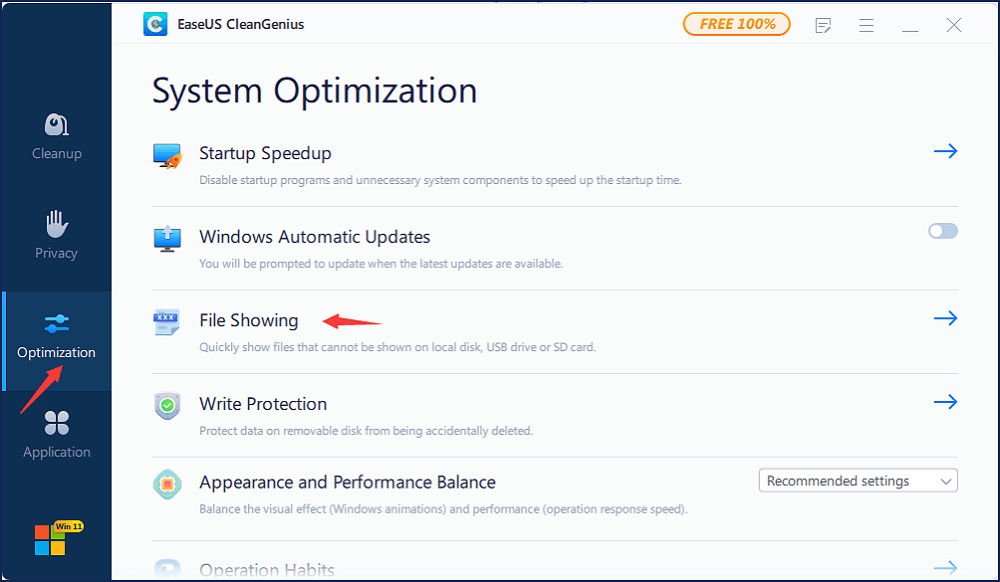
Step 3. Go to "Choose drive" and select the drive with a file system error. Check the "Check and fix file system error" option and click "Execute".
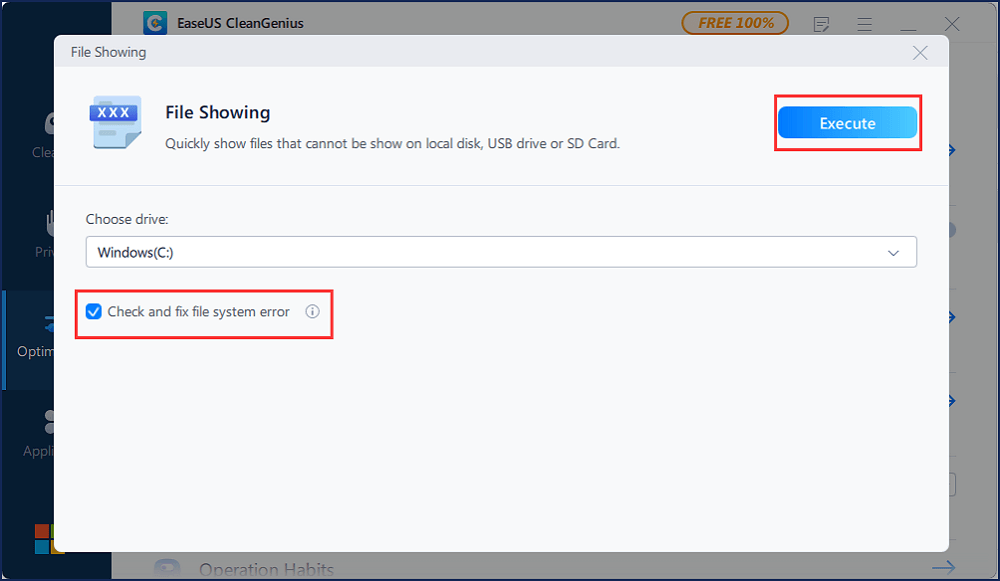
Step 4. Wait the EaseUS CleanGenius completes the repairing process. After that, click the "here" to view the result.
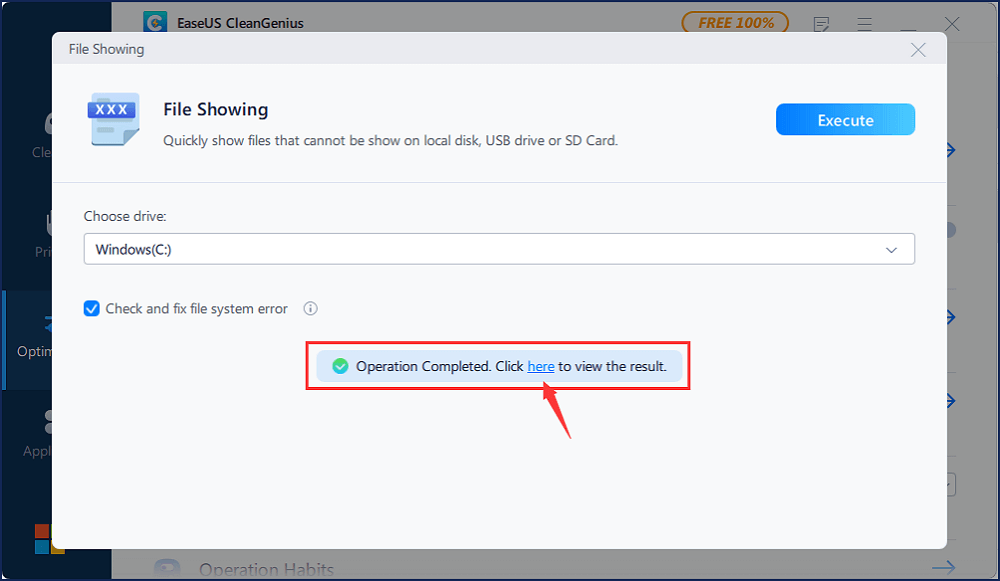
Solution 3. Reformat the External Hard Drive for Reuse
Taking your important data into consideration, you should make a full backup before proceeding with the final method. If the process of copying files still causes your external hard drive to become unresponsive, crash and freeze up in the end, download EaseUS EaseUS Data Recovery Wizard to access and retrieve inaccessible data.
Key features of EaseUS data recovery software:
- recover deleted files from Recycle Bin, HDD, SSD, USB, pen drive, SD card, external hard drive, and more
- Restore more than 1000 types of files, including photos, videos, documents, emails, etc.
- Repair corrupted files during data recovery on Windows 11/10/8/7
Step 1. Choose and scan the external hard drive
- Download and install EaseUS Data Recovery on your PC or laptop.
- Connect the external hard drive to your computer.
- Run EaseUS Data Recovery Wizard and choose the external drive from External drives list. Then, click "Search for Lost Data".
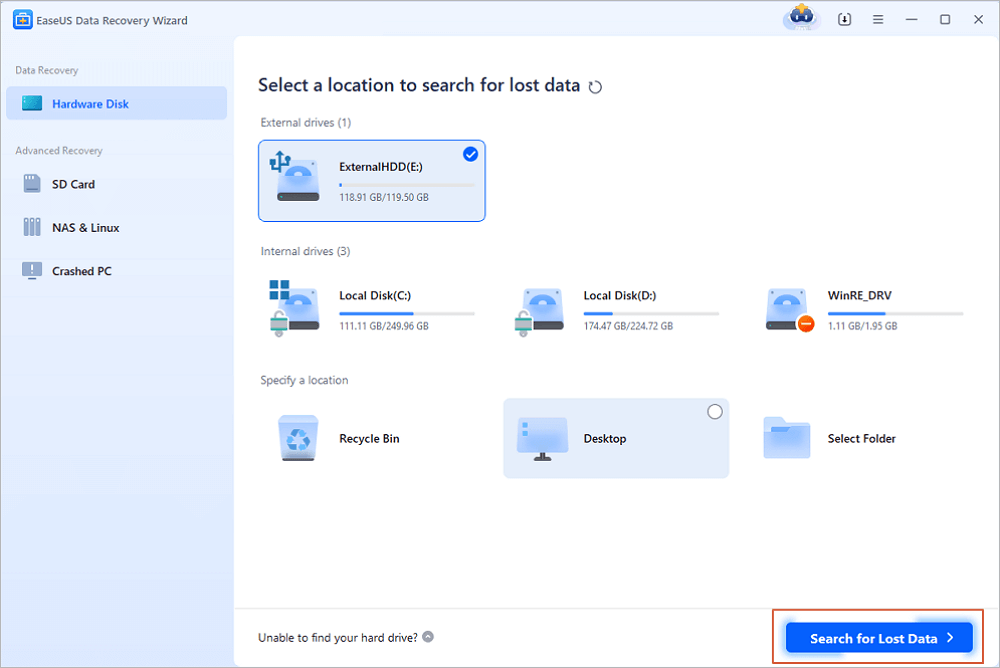
Step 2. Check the scan results
- EaseUS data recovery software will immediately scan the selected drive for all data, including deleted, corrupted, and existing data.
- You can use the Filter feature to quickly locate the files of one kind, such as Pictures, Word, Excel, PDF, videos, emails, etc.
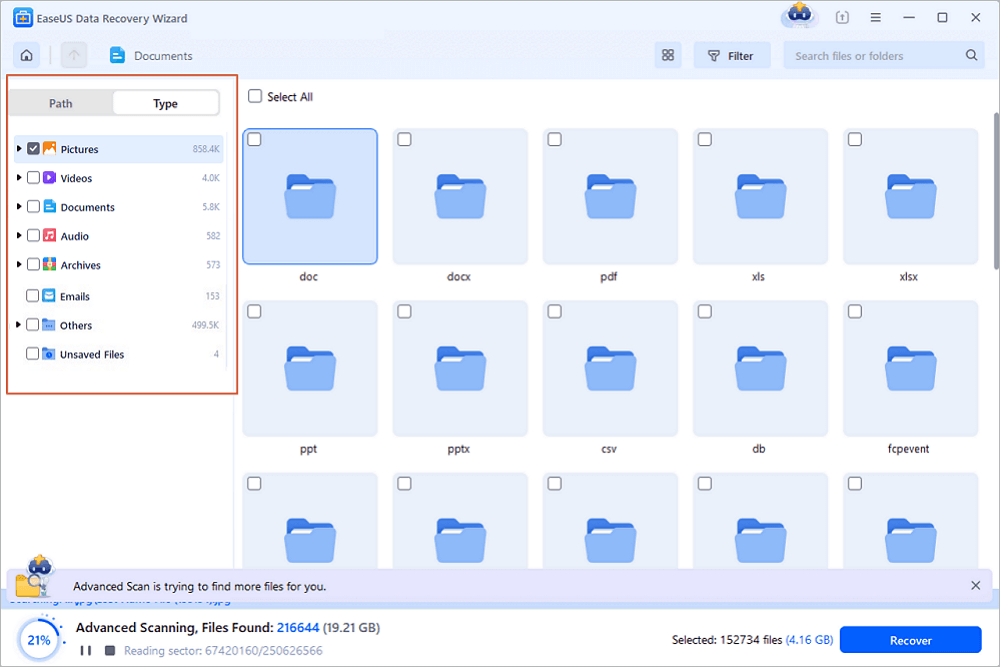
Step 3. Preview and recover data
- Double-clicking a file from the scanned results to preview.
- Choose the files you want and click "Recover".
- Select a different drive to save the recovered files instead of the original one.
💡Tip: You can restore data on the local disks, external hard drives, and also the cloud storage.
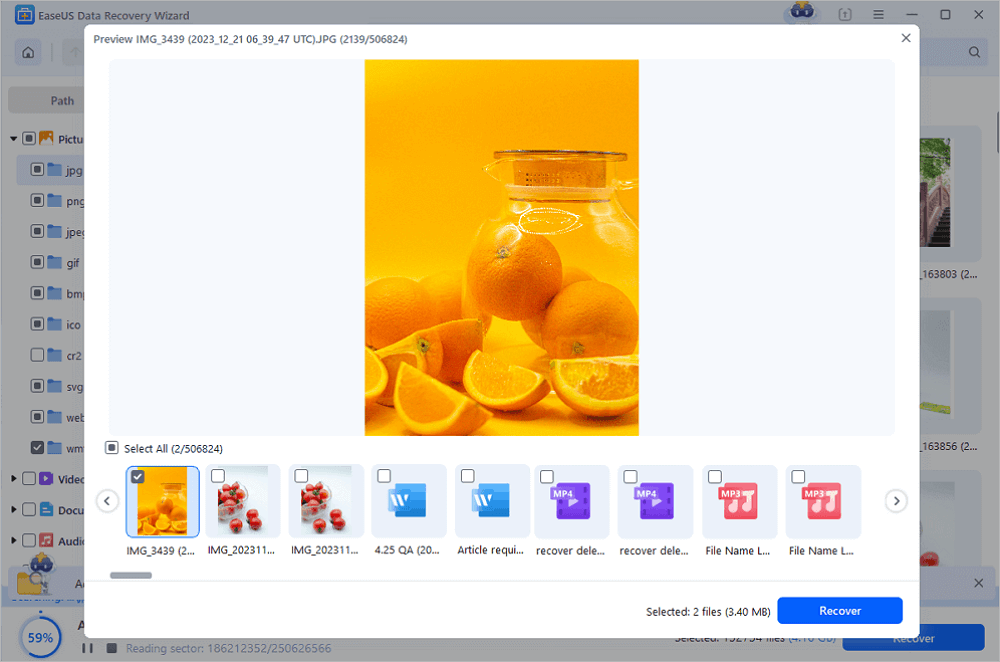
Next, go to Disk Management to fix the freezing issue on the external hard drive.
Step 1. Press Windows + R keys and type diskmgmt.msc in the Run box.
Step 2. Disk Management is now open. Right-click the external hard drive in question and click Format.
Step 3. Follow the format wizard and complete the procedure.
Step 4. Restart your computer and check if the issue persists.
Extra Tips for Resolving Your External Hard Drive Freezing Issue
Virus infection is another catalyst that causes your external hard drive to keep freezing, most commonly Seagate, Western Digital, Toshiba, etc. Simply removing bad sectors will not work in this situation. So, try to remove a virus from the hard drive or other storage devices that have a similar issue.
You’ve got two options to start out. Antivirus software like Avast is a good choice, otherwise, you can also use cmd to remove a virus by referring to this link. Both techniques are helpful.
Besides, people also ask the following questions. Read on if interested.
1. Can hard drive failure cause freeze?
When you notice your hard drive freezing, chances are that the hard drive is about to fail. So yes, hard drive failure will largely affect the data, the process of opening programs as well as the file transfer speed, and it can cause your mouse and keyboard to stop working. As a result, the computer freezes a lot when you try to access files stored on a damaged or corrupted area of your hard drive.
2. Does freezing a hard drive work?
Many experienced users suggest that freezing a hard drive (that is, exposing it to low temperatures) would effectively solve the most common hard drive problems, such as slowdown or crashing. However, it does not last long.
3. How do I fix my external hard drive not being recognized?
When a hard drive is not showing up or recognized by Windows, try to change a USB port or connection cable. Sometimes, using antivirus software to scan and remove viruses is helpful. You can take a close look at the advanced solutions to the external hard drives not recognized issue.
Was This Page Helpful?
Brithny is a technology enthusiast, aiming to make readers' tech lives easy and enjoyable. She loves exploring new technologies and writing technical how-to tips. In her spare time, she loves sharing things about her game experience on Facebook or Twitter.
Approved by David Balaban
David Balaban is a computer security researcher with over 18 years of experience in malware analysis and antivirus software evaluation. He presents expert opinions on contemporary information security matters, including social engineering, penetration testing, threat intelligence, online privacy, and white hat hacking.
Related Articles
-
WD External Hard Drive Not Showing Up But Light On (7 Fixes)
![author icon]() Tracy King/Jan 13, 2026
Tracy King/Jan 13, 2026 -
How to Recover Data from an SSD? Full Steps in 2026 [Detected or Not Detected]
![author icon]() Tracy King/Jan 13, 2026
Tracy King/Jan 13, 2026 -
Repair and Format Corrupted Android SD Card Without Losing Data
![author icon]() Tracy King/Jan 13, 2026
Tracy King/Jan 13, 2026 -
How to Unlock SD Card Without Switch [6 Methods]
![author icon]() Jaden/Jan 13, 2026
Jaden/Jan 13, 2026